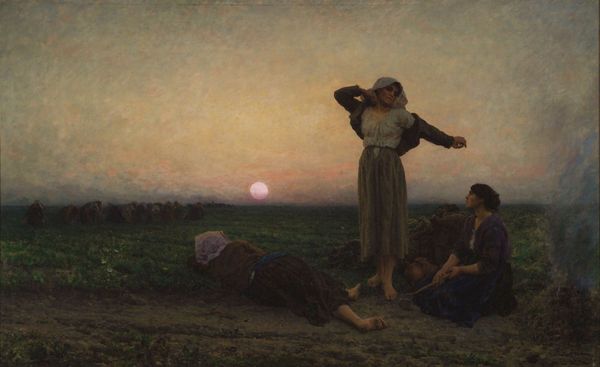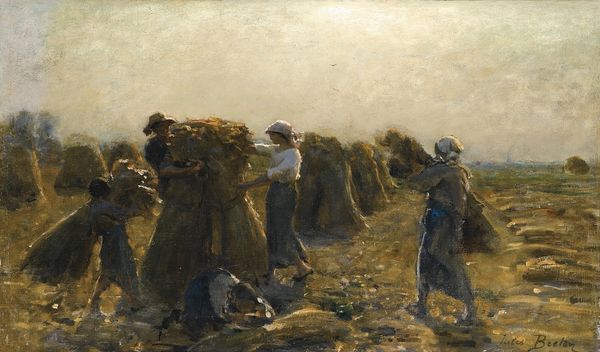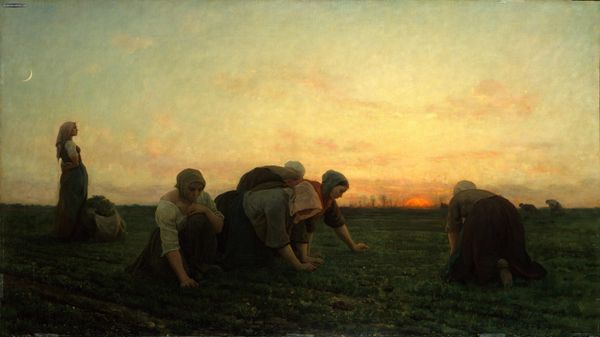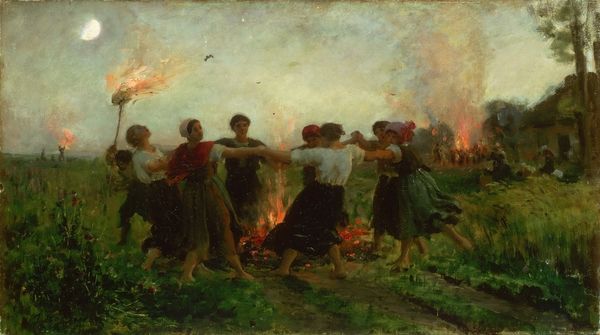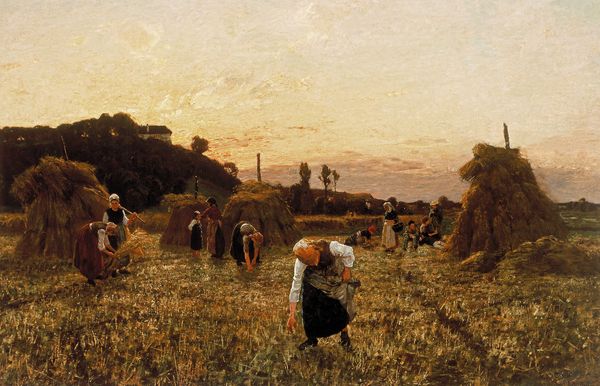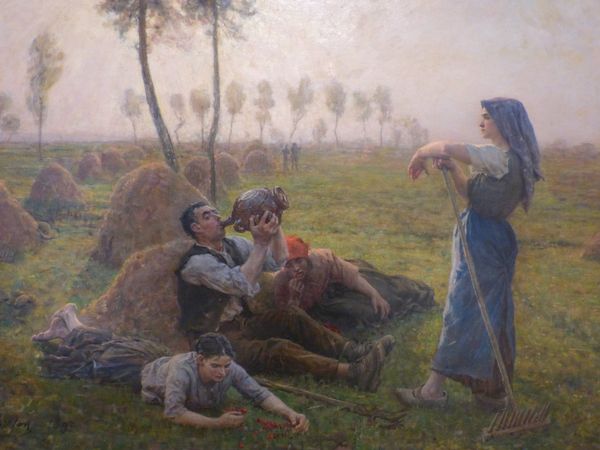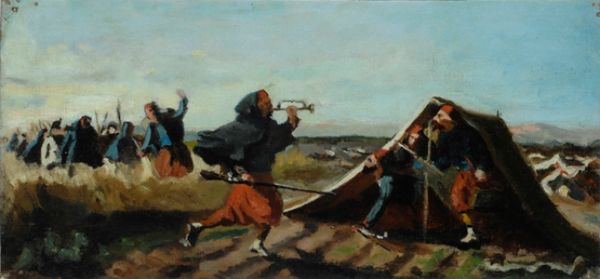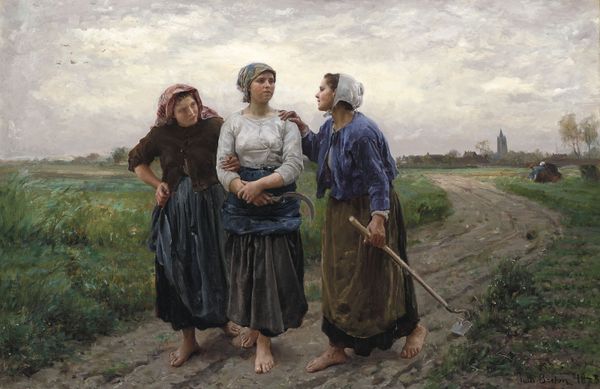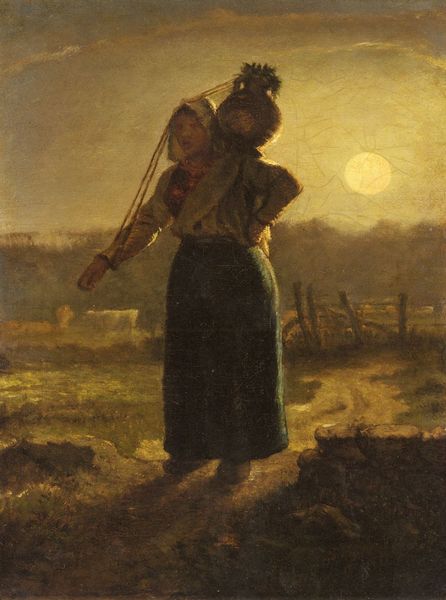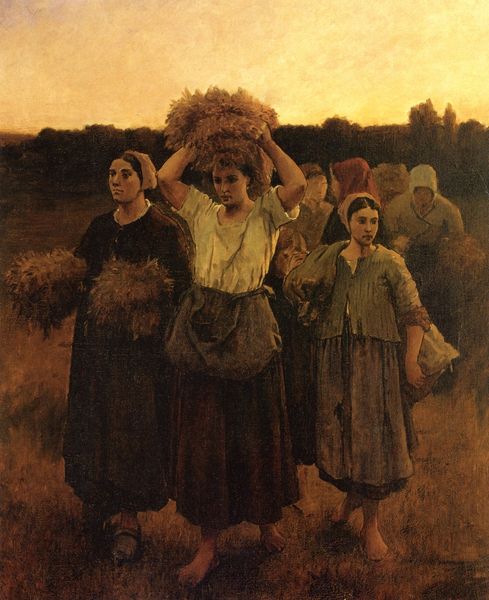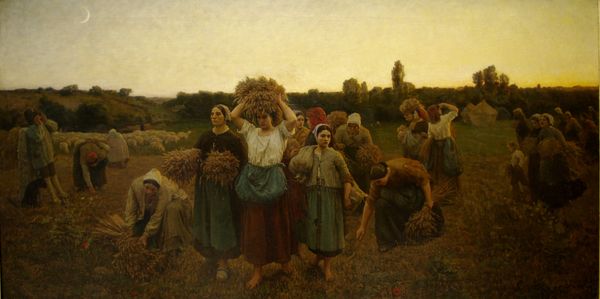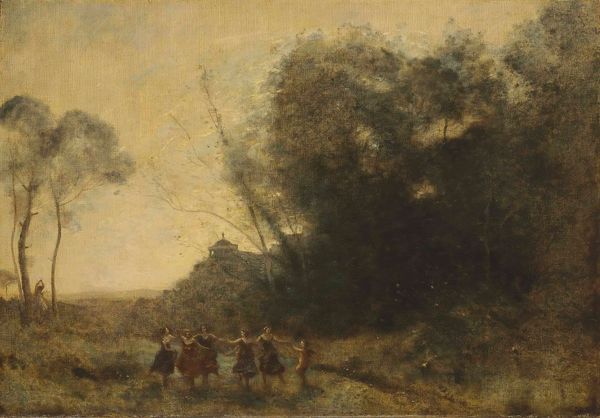
Dimensions: 29 x 47.5 cm
Copyright: Public domain
Curator: Before us hangs Jules Breton's "Midsummer Night Dance in Courrières," painted in 1875. Editor: It's incredibly atmospheric. I'm immediately struck by the painting's subdued, almost somber mood. Despite the title suggesting celebration, there's a palpable sense of stillness and quietude about the scene. Curator: Breton, as you know, was deeply interested in depicting rural life and labor. His paintings often focused on the peasantry and their relationship to the land, emphasizing their social realities. It’s important to remember this was created using oil paints and, from what we can observe, likely plein-air techniques to directly capture the natural lighting and textures of the setting. Editor: And it certainly shows. Looking closer, these women, are they engaged in some kind of ritual dance? Their clasped hands and circular formation evoke community, solidarity, but within a very patriarchal framework. The crescent moon hangs almost symbolically. Curator: Absolutely, but I wonder, given the artist's training, how 'real' the activity is depicted, in contrast to being perhaps a staging for the market, or commissioned patron. Did Breton really spend time in the fields, among working women? Did his own hand 'till' the material to earn the privilege of artistic reproduction of rural working people and their context? Editor: Those are very valid concerns regarding Breton's potential gaze but still, by engaging with such subject matter, he was inadvertently drawing attention to these often overlooked sectors of society and to gender. This dance could represent not only leisure, but a form of resistance through communal expression, a reclaiming of their bodies and time amidst grueling labor conditions. Curator: And that makes me wonder, considering your point, about the cloth worn on the women’s bodies. Note the varying color and the weight in its texture. Who would have been weaving that at that time, and who decided on that specific blend of material? Breton is interested, obviously, in making some attempt to represent the social realities, to draw a connection between them, but perhaps less about any act of 'resistance' and more, perhaps, about commerce. Editor: That’s certainly a persuasive perspective. Viewing the dance through the lens of daily material engagement reframes our understanding entirely! It challenges any simplistic interpretation of idyllic romanticism that it has sometimes been assigned. Curator: Exactly. Hopefully our visitors leave now with a deeper material-based and contextual awareness, of not only art history but the socio-economic realities underlining Jules Breton's visual stories of rural communities in 1875. Editor: And how it pushes us to question the romanticized portrayal of peasant life by interrogating identity, labour and potential nuances of resistance within its construction.
Comments
No comments
Be the first to comment and join the conversation on the ultimate creative platform.
